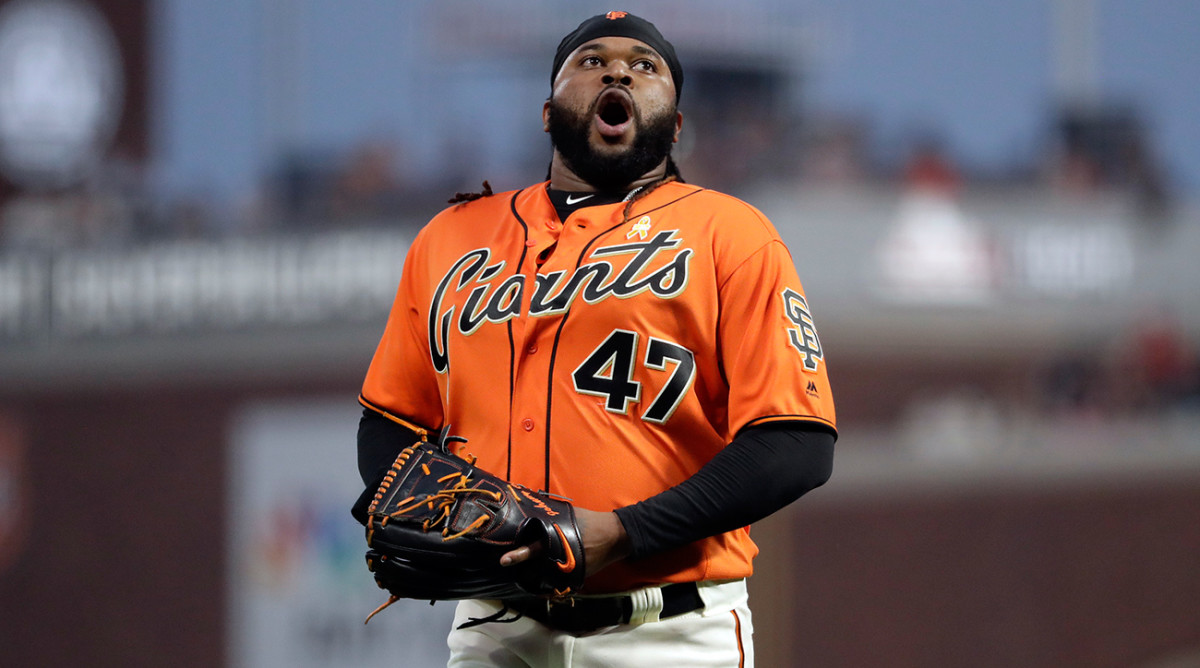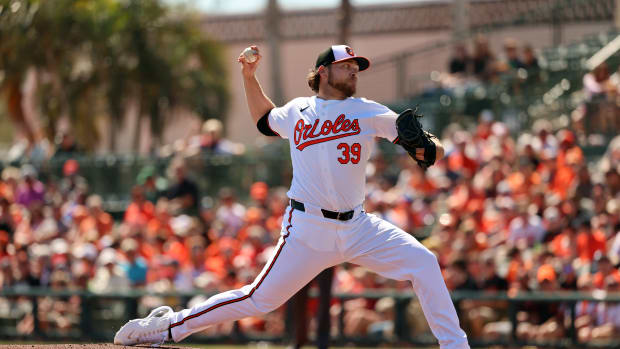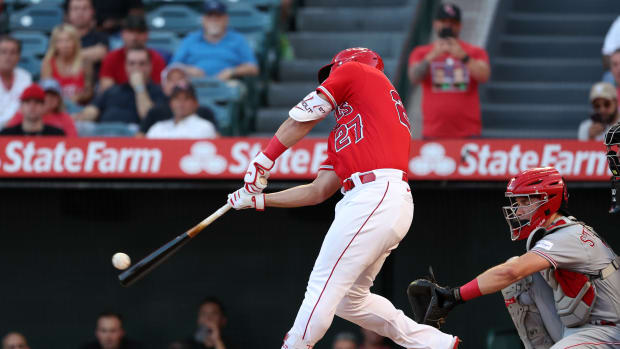
30. San Francisco Giants (61-95, minus-144 , LT: 29)
The offense was the problem, of course. You can’t finish dead last in the majors in multiple offensive categories and not acknowledge that a completely punchless attack was the reason for one of the most disappointing, dreary seasons in franchise history. But you can’t ask about the future of the Giants offense without figuring out the plan for the team’s rotation.
At the end of the 2015 season, the Giants spent $220 million to sign Johnny Cueto and Jeff Samardzija to massive contracts. Neither has panned out as hoped.
The investment in Cueto looked like a sound one last season; he flashed a 2.76 ERA and had the top-notch fielding-independent numbers to match. He’s had no such luck this season, watching his ERA balloon by nearly two runs, and fighting injuries.
Cueto’s situation could resolve itself. He has an opt-out clause in his contract which could allow him to test free agency at season’s end. But by doing that, he’d forego the final four years and $89 million remaining on his deal—and it’s not clear that he could do better than that on the open market, nearing his 32nd birthday, after the worst season of his career. If he stays put, the Giants would need to hope that Cueto could rebound. If he can’t, he won’t offer the kind of trade value that could allow the team to restock its weak farm system, nor acquire the kind of major league-ready offensive talent the Giants sorely need.
The Samardzija decision might come down to nothing more complex than the eye of the beholder. On one hand, he’s carrying the fifth-worst park-adjusted ERA among all qualified NL pitchers. On the other, he leads all NL pitchers (including Clayton Kershaw, Max Scherzer, and every other ace) in strikeout-to-walk rate, normally a telltale sign of skill and success. The reason for the disconnect is simple. When Samardzija locates his slider well, he pounds the strike zone, and also induces lots of outs. When Samardzija locates his slider poorly, he still pounds the strike zone, but hitters tee off on him as a result. If potential suitors see the elite strikeout-to-walk rate and see a slider that can be fixed, the Giants could conceivably deal Samardzija for a younger bat or two—especially if they’re willing to eat some of the $58.5 million they owe him over the next three years.
If not, then as with Cueto, they could be stuck, at least until both big right-handers start faring better. And if the Giants end up stuck, then rebuilding the team with the oldest group of position players in the National League might become even more difficult.


































